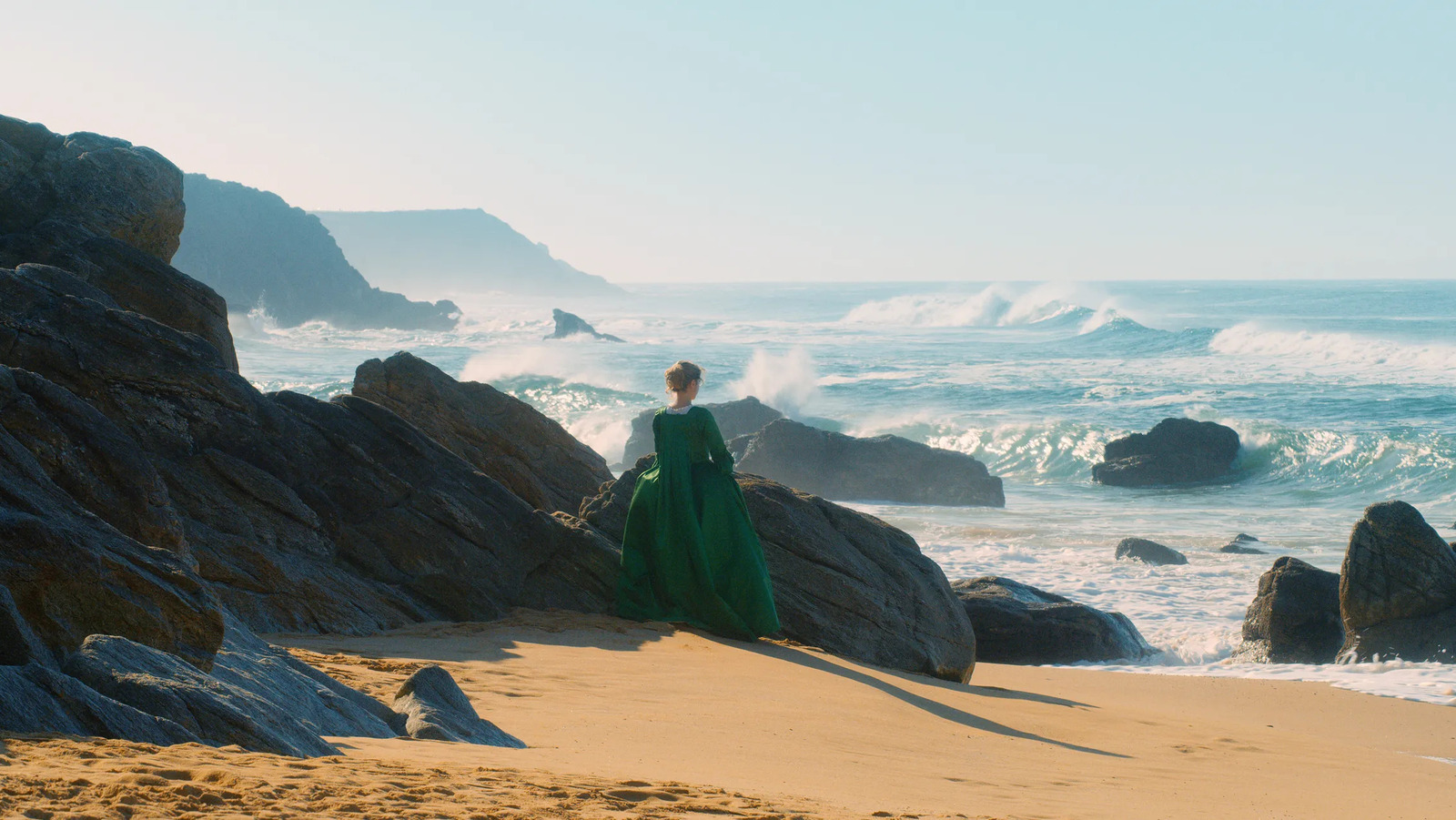Stepping into the world of “Portrait of a Lady on Fire” is akin to walking through a silent, emotional landscape. It’s a film that whispers its secrets, leaving a lingering echo within the recesses of one’s heart long after the credits roll. The beauty of this masterpiece lies not merely in the artistic brilliance of its cinematography, but in its ability to capture the most intricate nuances of human emotion – love, longing, and the subtle agony of unspoken desires.

Image: www.slashfilm.com
The film unfurls as a mesmerizing tapestry woven with threads of passion, defiance, and artistic expression. Set against the rugged backdrop of an island on the coast of Brittany, “Portrait of a Lady on Fire” transports us to a time where societal constraints sought to confine women’s lives and emotions. But as we delve deeper into this narrative, it becomes clear that what we witness is not just a portrayal of love in its purest form, but its struggle against a world designed to suppress it.
Painting a Portrait with Stolen Glances
At the heart of this cinematic masterpiece unfolds a forbidden love story between Marianne, a skilled but unconventional painter, and Héloïse, a young woman destined for a loveless marriage. Marianne is commissioned to create Héloïse’s portrait, unbeknownst to the subject, who is expected to remain unaware of the purpose behind these secret sittings.
The film masterfully uses the medium of art to depict the blossoming of their love. Every stolen glance, every brushstroke on the canvas, speaks volumes. We witness how Marianne translates her emotions onto the canvas, capturing not just Héloïse’s physical beauty, but the soul that emanates from within. In these moments, we see Marianne painting a portrait that goes beyond the physical, capturing the essence of Héloïse’s spirit, her desires, and her very being.
The Silence of Love’s Language
The film’s director, Céline Sciamma, masterfully employs silence and subtle gestures to convey the depth of emotion. The love story unfolds against a backdrop of unspoken words, allowing the audience to witness the tenderness of their connection through fleeting touches, lingering gazes, and the slow burn of their unspoken desires.
Marianne’s love for Héloïse is not expressed through grand gestures or declarations, but through quiet acts of devotion. The way she gently caresses Héloïse’s hair, the way she paints with an intensity that betrays her longing, and the way she subtly tries to protect Héloïse from a life that seeks to confine her speak volumes about the depth and intensity of their love.
The Power of a Woman’s Gaze
The film’s title, “Portrait of a Lady on Fire,” resonates on multiple levels. It refers not only to the painting Marianne creates but also to the story of Héloïse, who is literally set ablaze by the passion ignited within her when she meets Marianne. The very act of being painted, of being looked upon with such intensity and care, awakens something within Héloïse, a sense of self-discovery and a yearning for freedom.
But there is another layer to this title. The “lady on fire” is also Marianne, who is consumed by her own passions, her artistic ambitions, and her love for Héloïse. The film challenges the traditional power dynamics, highlighting the strength and resilience of women, who are not mere objects of desire, but individuals capable of fierce passion, intellectual pursuit, and emotional depth.
:no_upscale()/cdn.vox-cdn.com/uploads/chorus_asset/file/19437145/1_0iY3UnFloPXX6m15_riE_A.png)
Image: www.polygon.com
A Symphony of Sight and Sound
The film’s cinematography is a feast for the eyes. Every frame is meticulously composed, showcasing the breathtaking landscapes of Brittany while simultaneously creating an intimate and immersive atmosphere. The camera lingers on the characters’ faces, their expressions, and their subtle gestures, revealing the complexity of their emotions.
The soundtrack is equally evocative, blending classical melodies with haunting folk songs, creating an immersive soundscape that mirrors the characters’ inner turmoil. This subtle interplay of music, visuals, and silence creates a powerful synergy that heightens the emotional impact of the film.
Beyond the Canvas: An Invitation to Embrace Freedom
“Portrait of a Lady on Fire” is not just a romantic drama; it’s an exploration of the human condition, of the yearning for freedom, self-expression, and authentic love. It challenges societal norms and invites us to question the boundaries imposed upon us. The film reminds us that love, in its purest form, transcends social constraints and societal expectations.
The characters’ struggles are our own struggles. We see ourselves in Héloïse, yearning to break free from the shackles of societal expectations. We see ourselves in Marianne, longing to be seen and understood. The film’s power lies in its ability to awaken our empathy, to make us feel the intense emotions bubbling beneath the surface, and to remind us that love, in all its forms, is a powerful force worth fighting for.
Portrait Of A Lady On Fire Scenes
Finding Your Own Fire
“Portrait of a Lady on Fire” leaves an indelible mark on the soul. It’s a film that stays with you long after the credits roll, prompting you to reflect on your own aspirations, your own desires, and perhaps even questioning the choices you’ve made. This is a film that encourages us to embrace our own fire, to find our own voice and fight for the freedom to live authentically. The film reminds us that true love is a rare and precious thing, and that it’s worth fighting for, even if it means defying societal norms and expectations.






